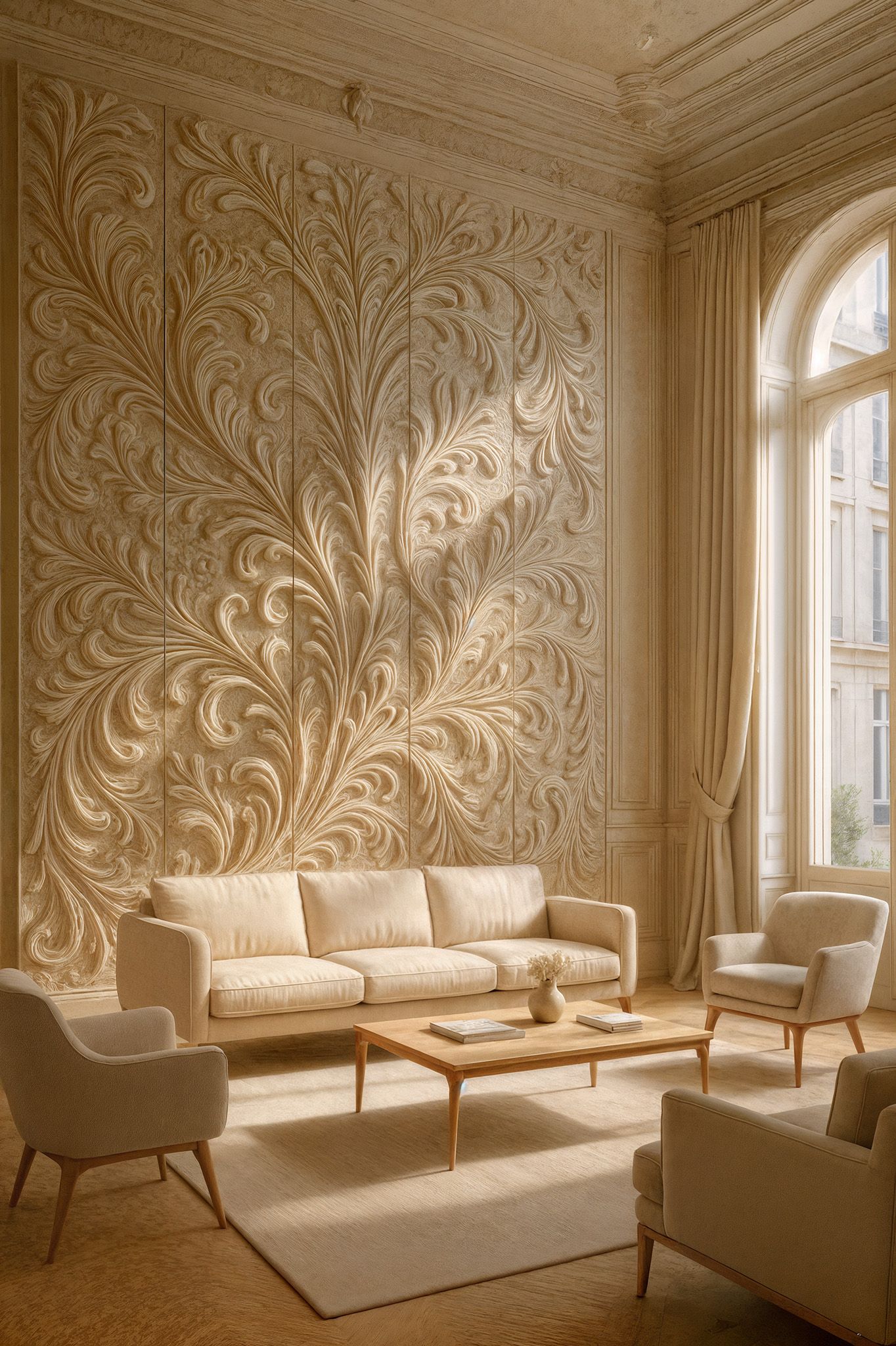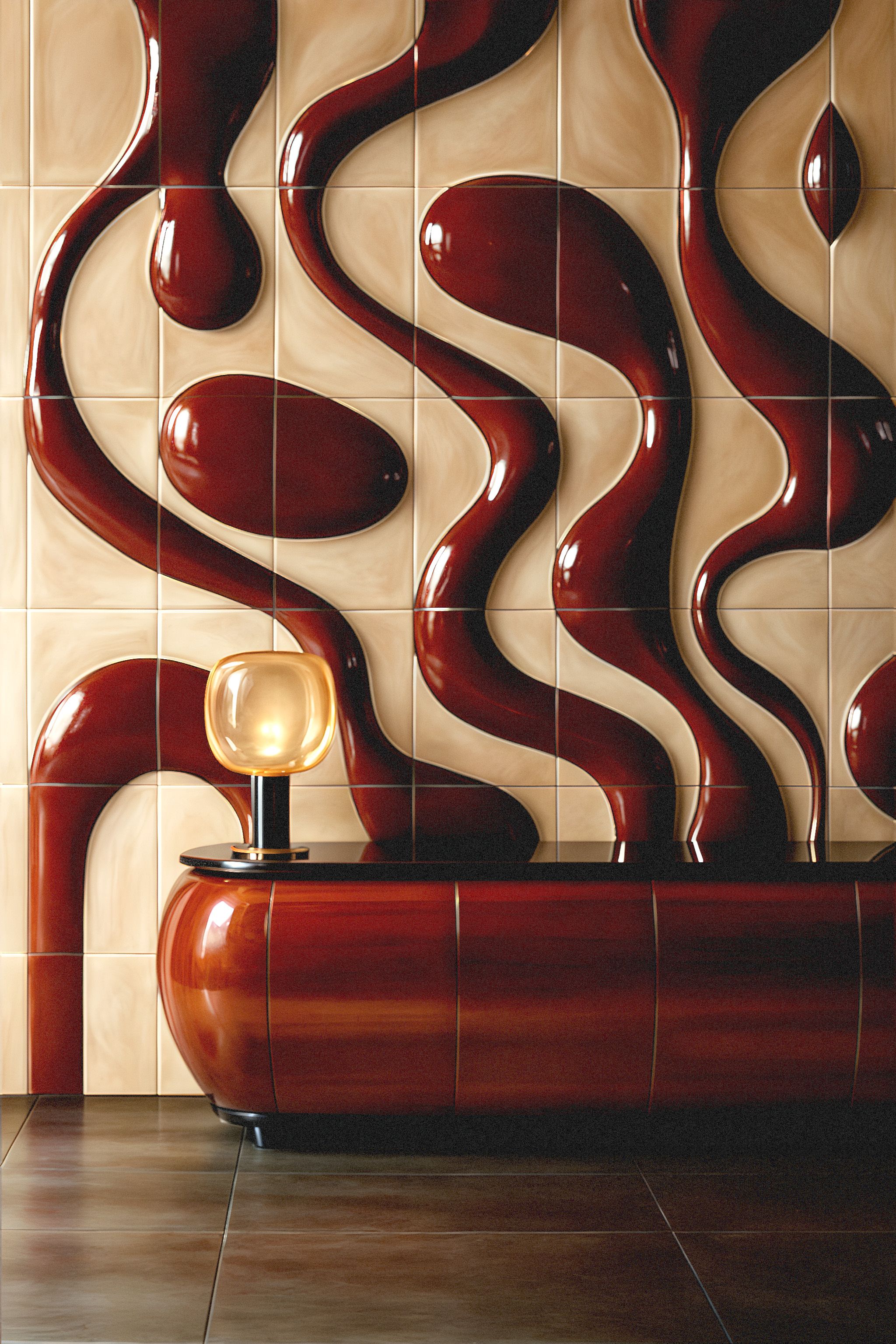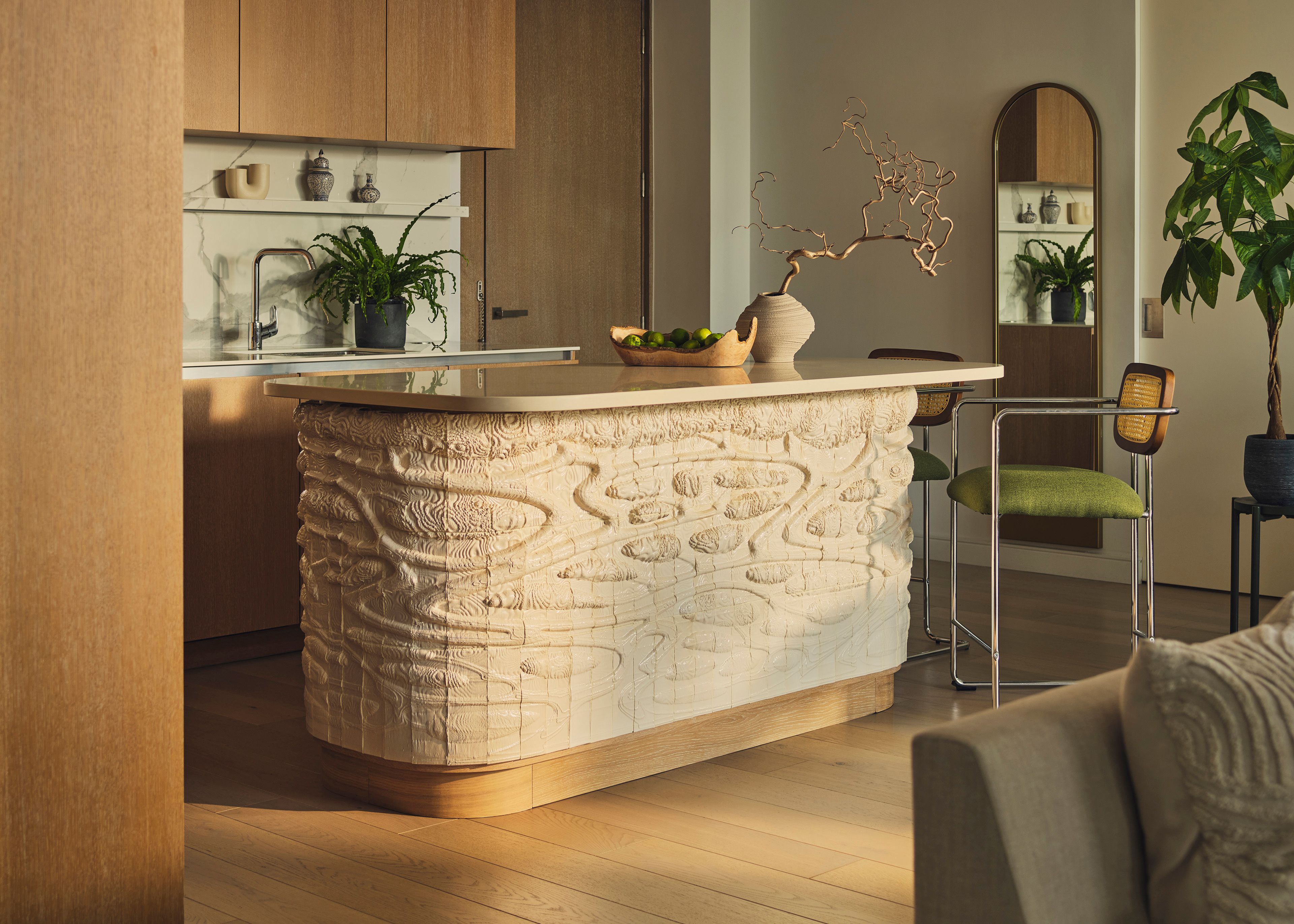StögerHaus: From London’s Earth to Living Architecture
Your unique designs seem alive and create movement effectively, did you have any specific inspiration when creating these designs?
Ah, glad to hear it! That is something we’re really keen on trying to incorporate into the work. A lot of the movement and life people connect with comes from looking closely at how nature behaves - there’s so much intelligence embedded in natural systems, from the way roots grow to how natural structures like bones are optimised. We use digital tools and simulations to try and translate that into physical surfaces, almost like letting the material grow itself. But at the same time, we’re deeply inspired by the history of architecture - things like gothic detailing, the organic lines of art nouveau, and even the optimism of retro-futurist design. So it’s really a blend: using modern technology to reconnect with architectural craft and expressiveness that feels like it’s been missing from a lot of contemporary spaces. We want the work to feel alive, but also to carry forward a kind of hopeful, imaginative spirit.



Take us back to the beginning, what was the initial concept and idea, how did you come to use only London Clay?
This all really started during the first Covid lockdown. I was working from home, staring at a screen all day, and just feeling a bit disconnected. I had this strong urge to bring my digital work into the physical world - and clay felt like the perfect material to do that with. It’s so deeply tied to human history, and yet still full of potential for innovation. In the evenings, I started designing and building a clay 3D printer from scratch. It took nearly a year of tweaking and testing, but eventually I started producing these small, intricate pieces. I was in love. That led me into my master’s at the Bartlett, UCL, where I really dove into developing new design approaches for this machine - thinking not just about the object, but about choreographing the movement of the printer itself to create larger, more precise and expressive forms. Around that time, I also met Sara Howard and Gabriel Gau from Golden Earth Studio, who were reclaiming clay from London construction sites. That was a huge turning point - it gave the work a grounding in place and story. Suddenly, the material wasn’t just clay, it was part of the city’s fabric. It all came together from there.
You create your surfaces and sculptures with reclaimed London Clay, how did you realise this was something that would work well for your designs? Was there trial and error with other materials before landing on clay?
To us, this material is more valuable than marble or gold - because it’s London. Every piece we make is a tribute to that: to the city’s beauty, its layers of history, and the people who shape it. The clay we work with often starts out as yellow or brown, dug straight from construction sites where it’s treated as waste - developers actually pay to have it removed and sent to landfill. But once it’s fired, it transforms into this incredibly rich, warm terracotta that feels full of life. I started out using commercially available stoneware, but quickly realised the environmental cost. It’s mined in huge open-pit sites across the globe, processed, shipped, and stripped of any sense of place. It becomes anonymous. What we’re doing now is the opposite of that. We’re combining modern fabrication technology with materials that are hyper-local, full of story, and already part of the city’s fabric. London itself becomes an urban mine - overflowing with material that’s waiting to be reimagined into something beautiful and lasting.

Working with clay will present its own issues in the firing process, what were some of the biggest problems you had when developing your products and how did you overcome these?
Working with reclaimed clay is definitely a challenge - but it’s also what makes the work so rewarding. Because the material varies so much from site to site, every new batch has to be tested to make sure it’s suitable for printing and durable enough to last for decades. The biggest hurdles we’ve had to overcome are cracking during drying, warping, and uneven shrinkage. To manage this, we carefully balance small amounts of natural additives in the mix, fine-tune the geometry of each design, and slow down the drying process so the clay can gradually settle into shape. We also print at a larger scale to account for shrinkage during both bisque and glaze firings. Right now, our ceramic surface components hold a tolerance of around ±1mm, which we accommodate through thoughtful placement and strategic grouting. We’ve also spent a lot of time developing and testing glazes that are compatible with the lower firing temperatures of London clay - so even with all the materials quirks, the final result is strong, stable, and beautiful.
What do you plan on doing next with your designs, what are your aspirations?
Our aim is to bring back craftsmanship, narrative, and tactility into contemporary architecture - qualities we feel have been lost, but which are now within reach again thanks to modern technology. We’re so glad that this mission is resonating with people, and we’re currently in conversation with luxury hotels, restaurants, and even the Natural History Museum about bespoke ceramic installations. At the same time, we’re developing our surfaces for use on exterior facades, and we hope to see them installed on a prototype “house of the future” in summer 2026. The goal is to embed the intelligence of nature into these surfaces - not just to make buildings more beautiful, but to help them perform better: improving thermal and acoustic insulation, integrating bio-receptivity, and managing water flow. We want to create buildings that live, breathe, respond, and adapt to their environments - spaces that feel more alive, and more in tune with the world around them.
)
)
)